Vietnamese is rich and beautiful. It becomes even more familiar and beautiful through the creativity of young people in different ways, this time using brush strokes.

From left to right: Nguyen Thuy Dung, Vo Nam Du and Thai Quyen - Photo: NVCC
Rediscovering the profound values hidden in the mother tongue, expressing them through each picture with all passion. It cannot be anything else if not "I love my mother tongue, since birth...".
Put Tale of Kieu in message card
Vo Nam Du told the story of the idea of selecting verses from the Tale of Kieu and then working with his colleagues to design and illustrate the Tarot Kieu card set that appeared when you read the article "Tarot Philosophy and the Tale of Kieu: From Innocence to Prejudice" by researcher Nhat Chieu. Du said that it was a rather interesting, unique, and approachable approach for young people.
From 22 cards compiled by teacher Nhat Chieu, Du and his friends developed 78 cards corresponding to the scenes in the work. An interesting discovery was that when doing this, Nam Du realized that he only knew but did not really understand Truyen Kieu. Because Nguyen Du's use of Vietnamese in the 18th century was very different from today, not to mention he also used many historical allusions and historical references when writing.
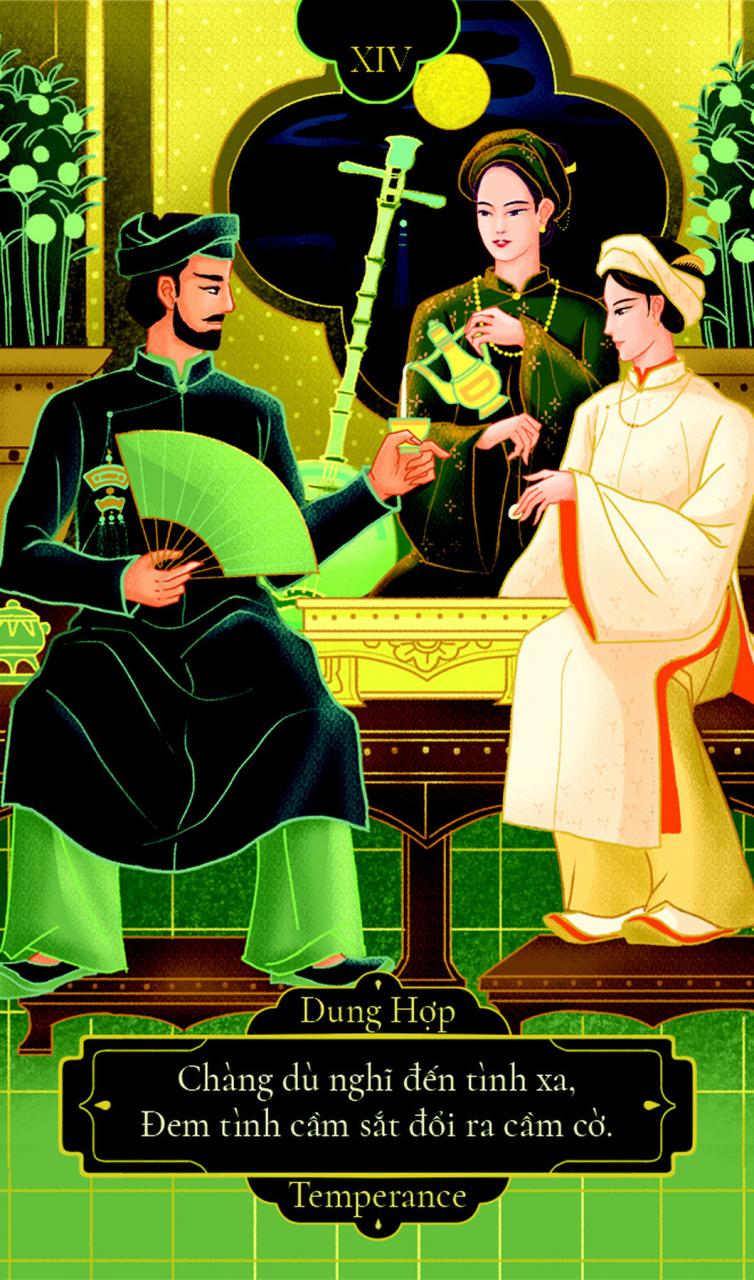
The Tale of Kieu message cards made by young people in the book Tale of Kieu & Tarot - Photo: NVCC
During the days of working on the project, he not only read but also studied more deeply about this work, searched for related documents, and asked Mr. Nhat Chieu to explain any unclear points. Continuing like that for six months, plus two months of studying Tarot, Du was confident to take the next steps.
With graphics, artist Tu Ngo skillfully combined modern elements and applied Nguyen Dynasty art details when creating the set of 78 paintings. "It took me nearly two years to find materials, draw and redraw many times, now seeing the results being well received by everyone, all the fatigue has disappeared," Tu Ngo smiled.
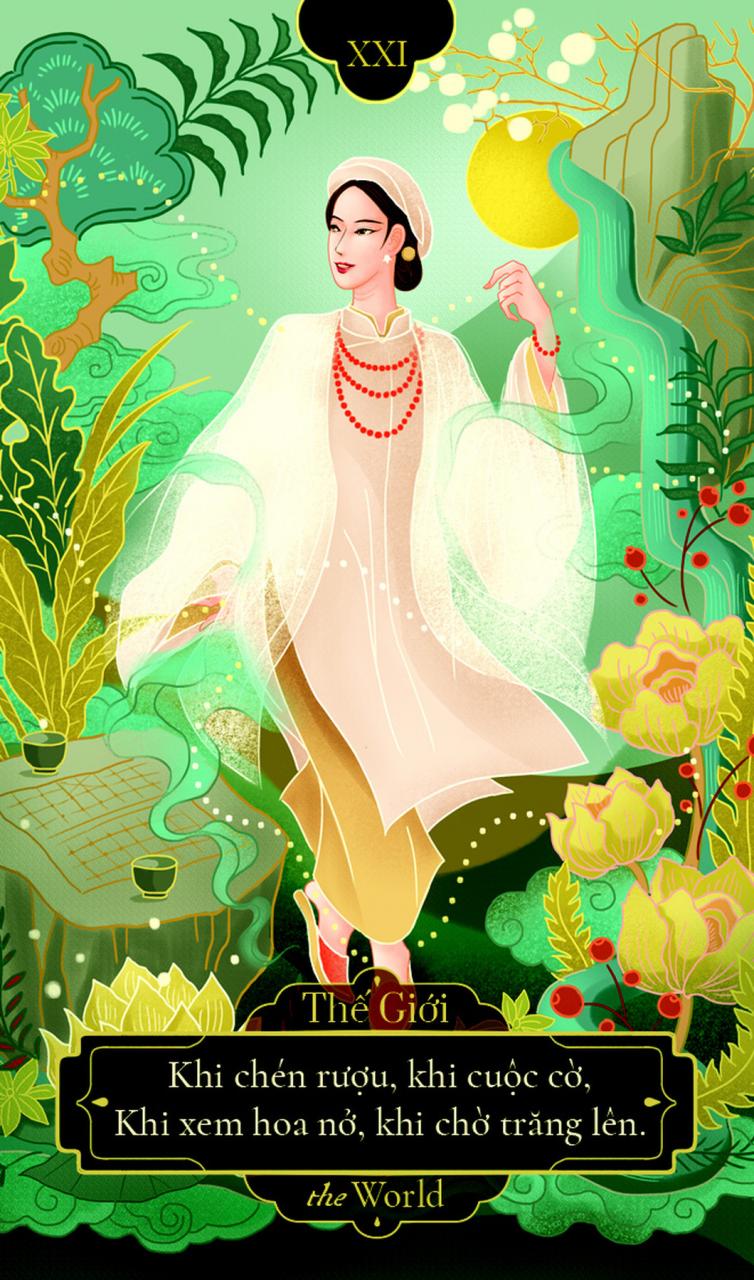
The Tale of Kieu message card in the book Tale of Kieu & Tarot - Photo: NVCC
You have just released the book Truyen Kieu & Tarot with suggestions for reading message cards, contemplating this famous work in many different ways. The group also released the ebook format so that everyone can read it anywhere.
Picture book "ancient beautiful words"
"I often read old poems and literature and discovered many very poetic and romantic words that are rarely used today, and are sometimes a bit difficult to understand for many people, especially young people. I introduced such words on the fanpage and website "Everyday Writing". When people welcomed and supported me, my friends and I decided to turn the online photo album "ancient beautiful words" into a book", Nguyen Thuy Dung shared the idea of initiating the project.
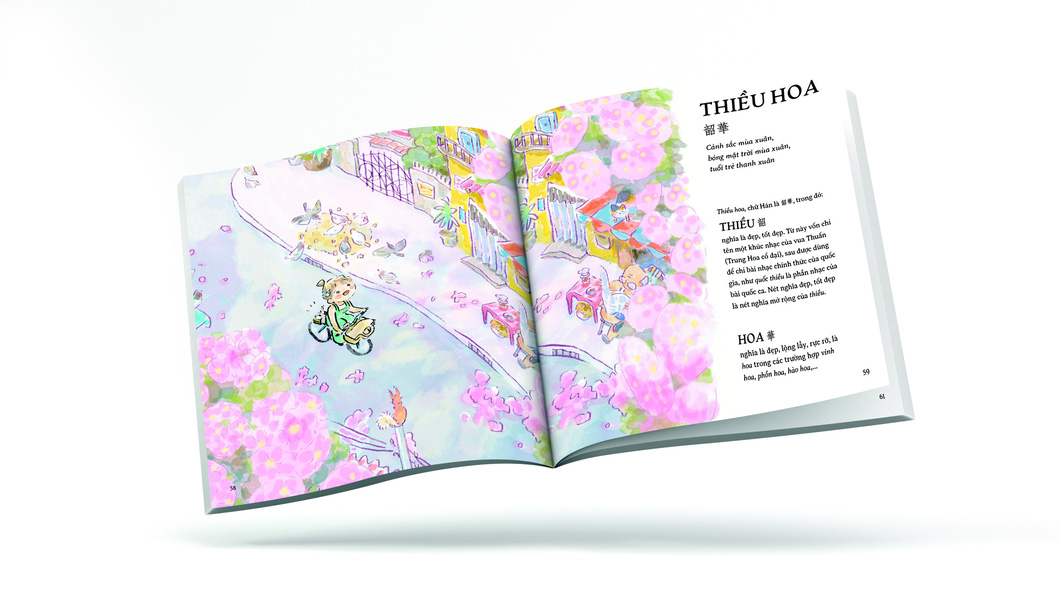
One of the words presented by Nguyen Thuy Dung and colleagues in the book of ancient beautiful words - Photo: NVCC
Ancient beautiful words are words with ancient nuances, beautiful meanings, and sounds when read, but are rarely used today. The 58 words in the book were selected by young people from many ancient Vietnamese literary works.
For example, "duat van" (three-colored clouds, symbolizing good omen) in the poem Tay trinh lu loi by Phan Huy Ich, "thien chuong" (brilliant, beautiful things like the moon and stars in the sky) in Chinh phu ngam khuc by Dang Tran Con , "yen canh" (beautiful scene with clouds and smoke, scene of seclusion) in the poem Son Thuy do by Nguyen Van Sieu...
To be able to draw illustrations, you have researched who the readers are to choose images and design styles to create the smoothest and most pleasant reading experience. "The group does not dare to hope to revive an ancient word class, but hopes to bring readers a little joy when experiencing words with many expressive nuances in Vietnamese," Thanh Quynh - head of the project's art department - shared.
You created the characters of Chi and the Wagtail to connect the words describing natural scenery with the words describing emotions and life. This is also an interesting feature when these two characters lead the readers throughout the book.
Each painting clearly shows the literal and figurative meanings of words through images of contemporary life, creating a contrast with ancient poems and literature, also shortening the distance between readers and the content.
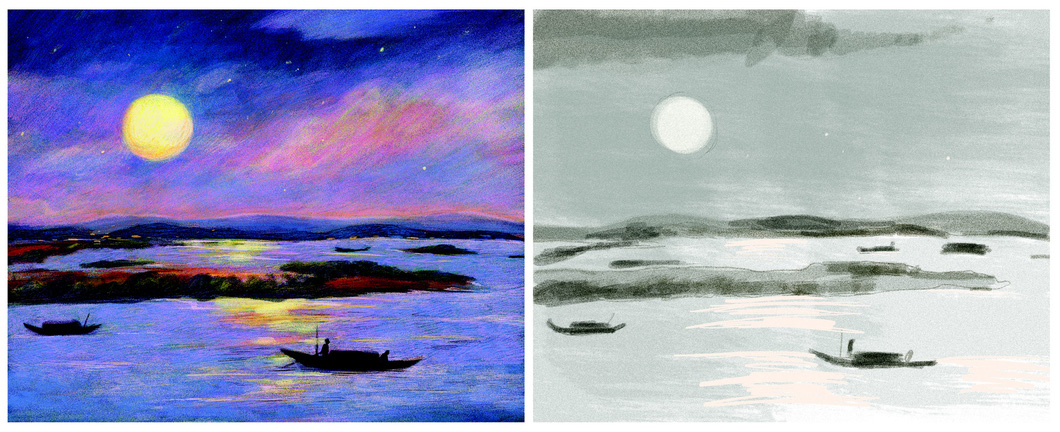
Painting by young artist Thai Quyen for the poem Moonlight on Dong Ho (Lam Tan Phac) - Photo: NVCC
Vietnamese literature through paintings
Thinking that painting can also be a way to convey literary works to readers, Kim Dong Publishing House has selected a number of excerpts of literature and poetry from textbooks that are familiar to many generations of students to start this project.
Quiet Sa Pa (Nguyen Thanh Long), Viet Bac (To Huu), Fishing Boats (Huy Can), Natural Scenery of Nghe An (Dang Thai Mai), A Thousand Years of Khuong My Tower (Lam Linh), Tamarind Rows of Saigon (Binh Nguyen Loc)... have been "ordered" to have words turned into paintings.
The book project "Remaining Lands - Vietnamese Landscapes in Literature" brings together 30 artists of different ages and painting styles.
Thai Quyen, one of the young artists participating in the project, shared that she loves poetry and enjoys illustrating poetry, so she was very happy to be invited to participate in the project. Quyen was commissioned to illustrate excerpts from two poems, Homeland (Te Hanh) and Moonlight on Dong Ho (Lam Tan Phac).
Originally from the Central Coast, Quyen said she missed home so much when reading the evocative lines of poet Te Hanh. As for the poem Moonlight on Dong Ho , she was most impressed by the line "Ho chi tinh doi nguyet chi hang" (the lake with the moon enhances the scenery), which is romantic and beautiful.
"From that overflowing source of emotion, I used colored pencils to draw pictures depicting the vast sky with the moonlight hanging, with boats drifting along the undulating waves," Quyen said.
Tuoitre.vn








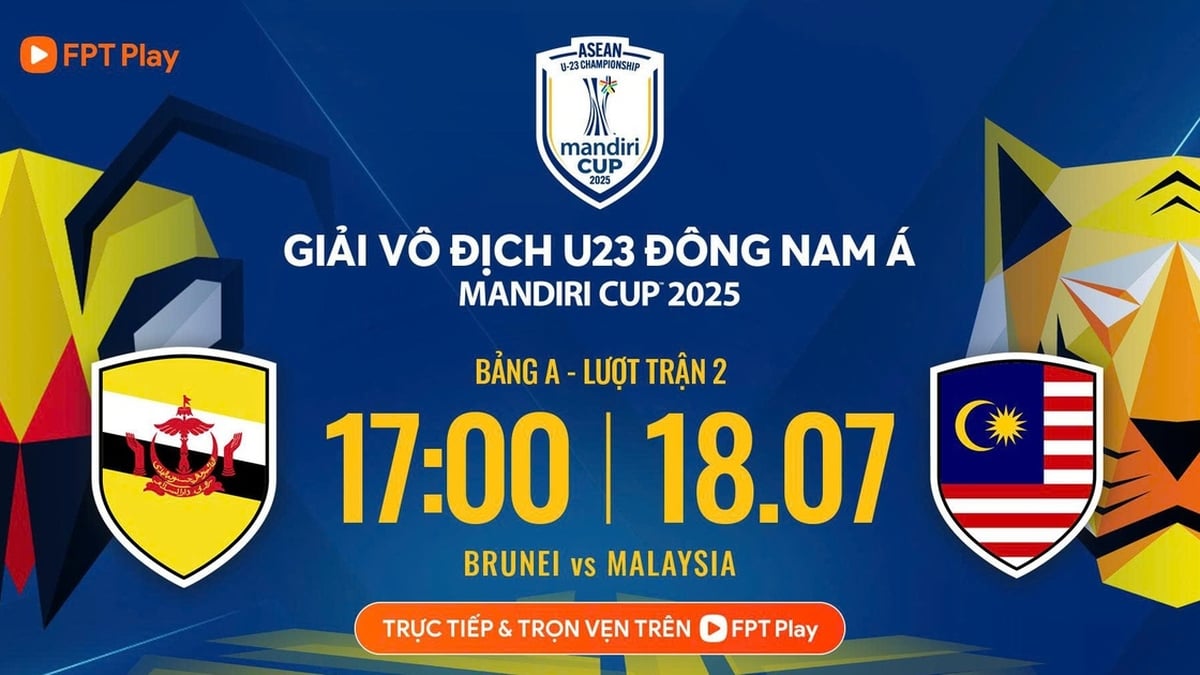



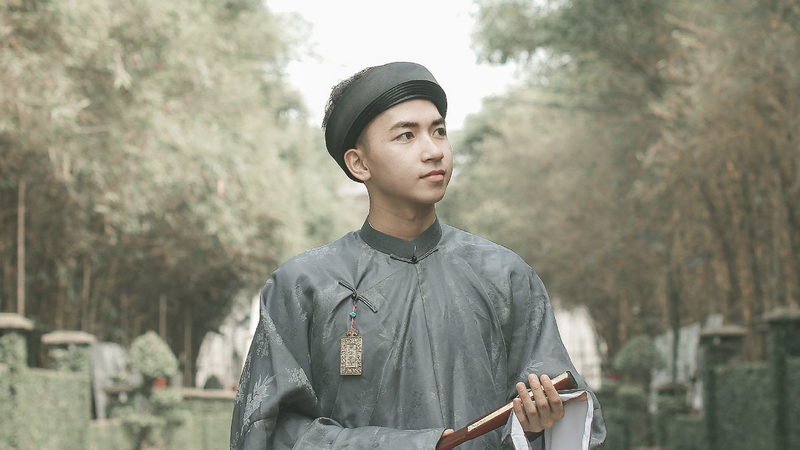












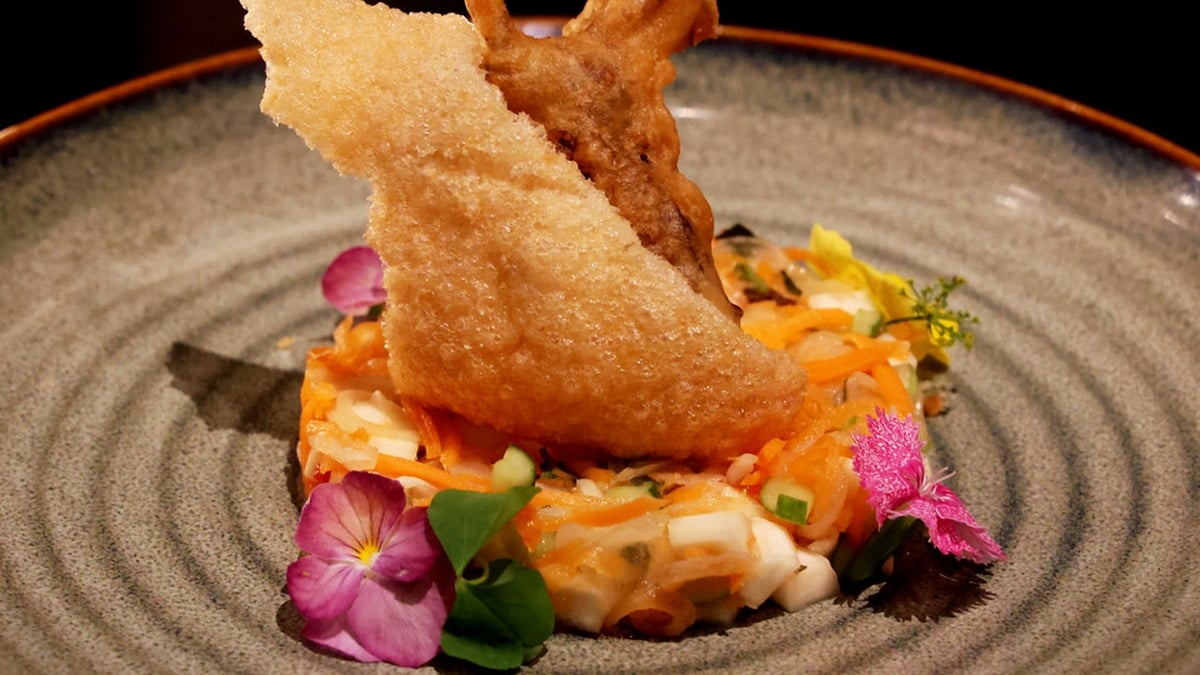






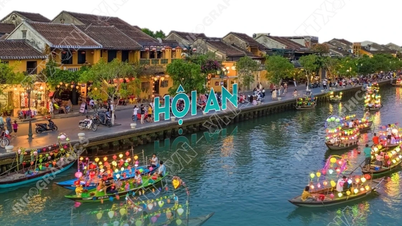

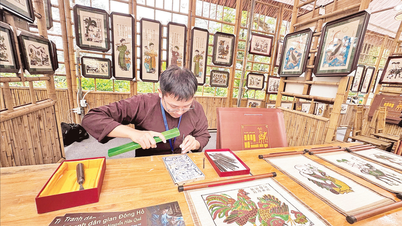










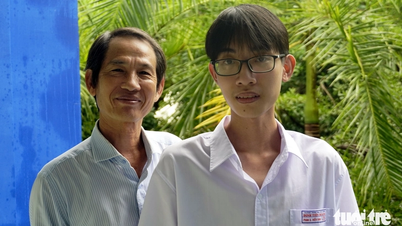
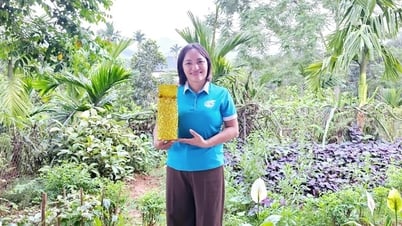





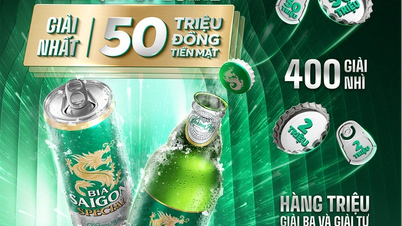










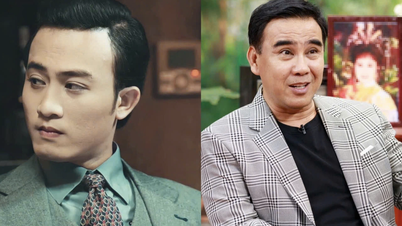










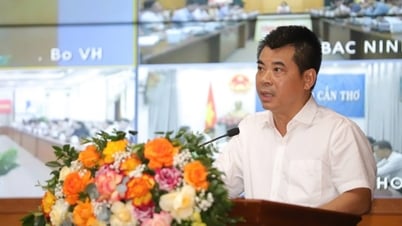









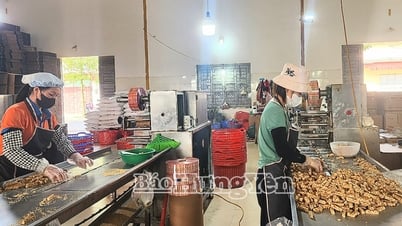



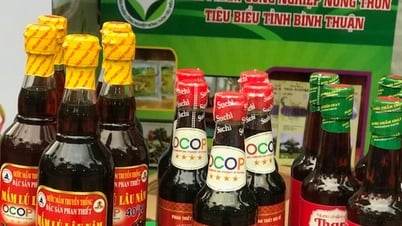







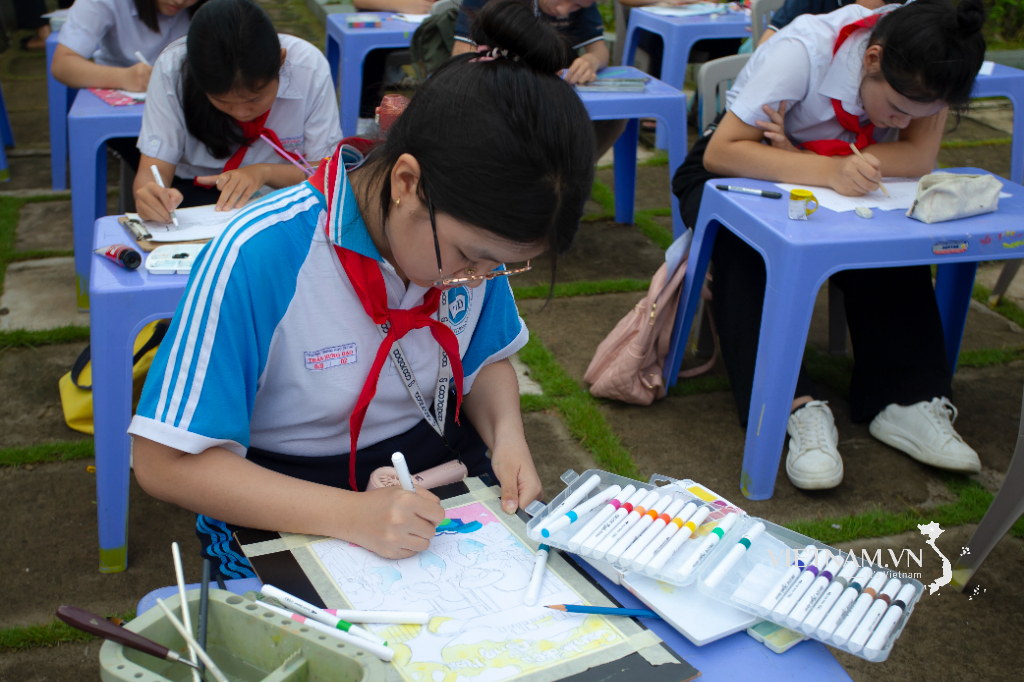
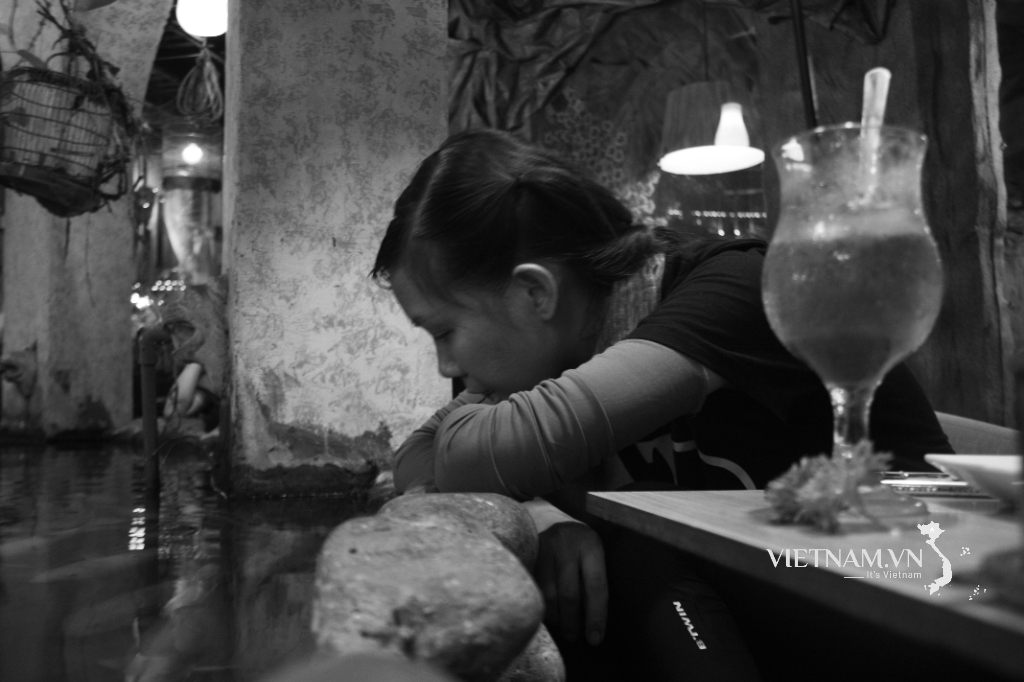

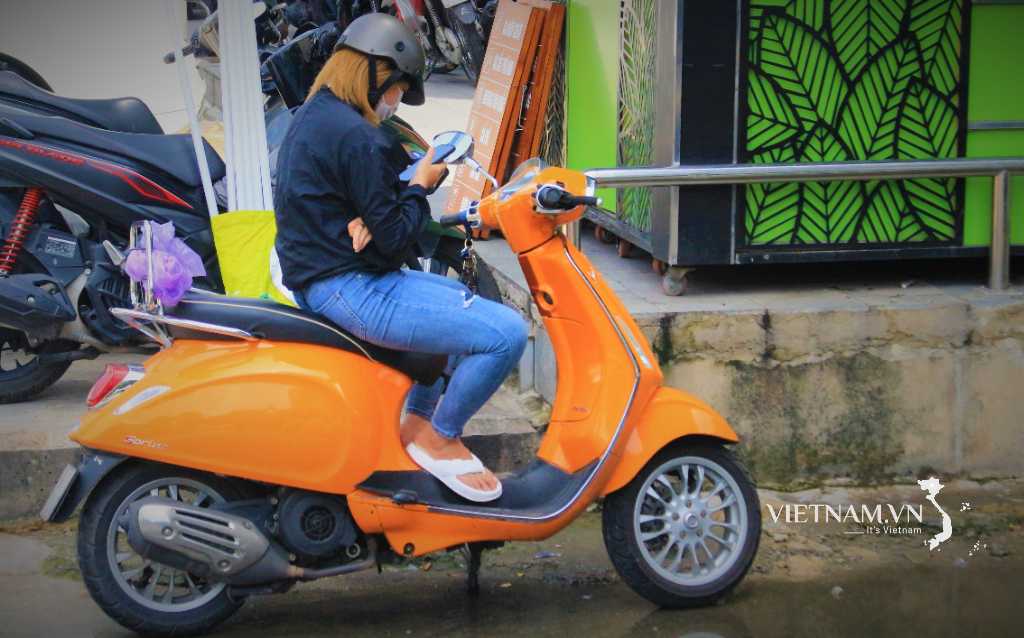
Comment (0)